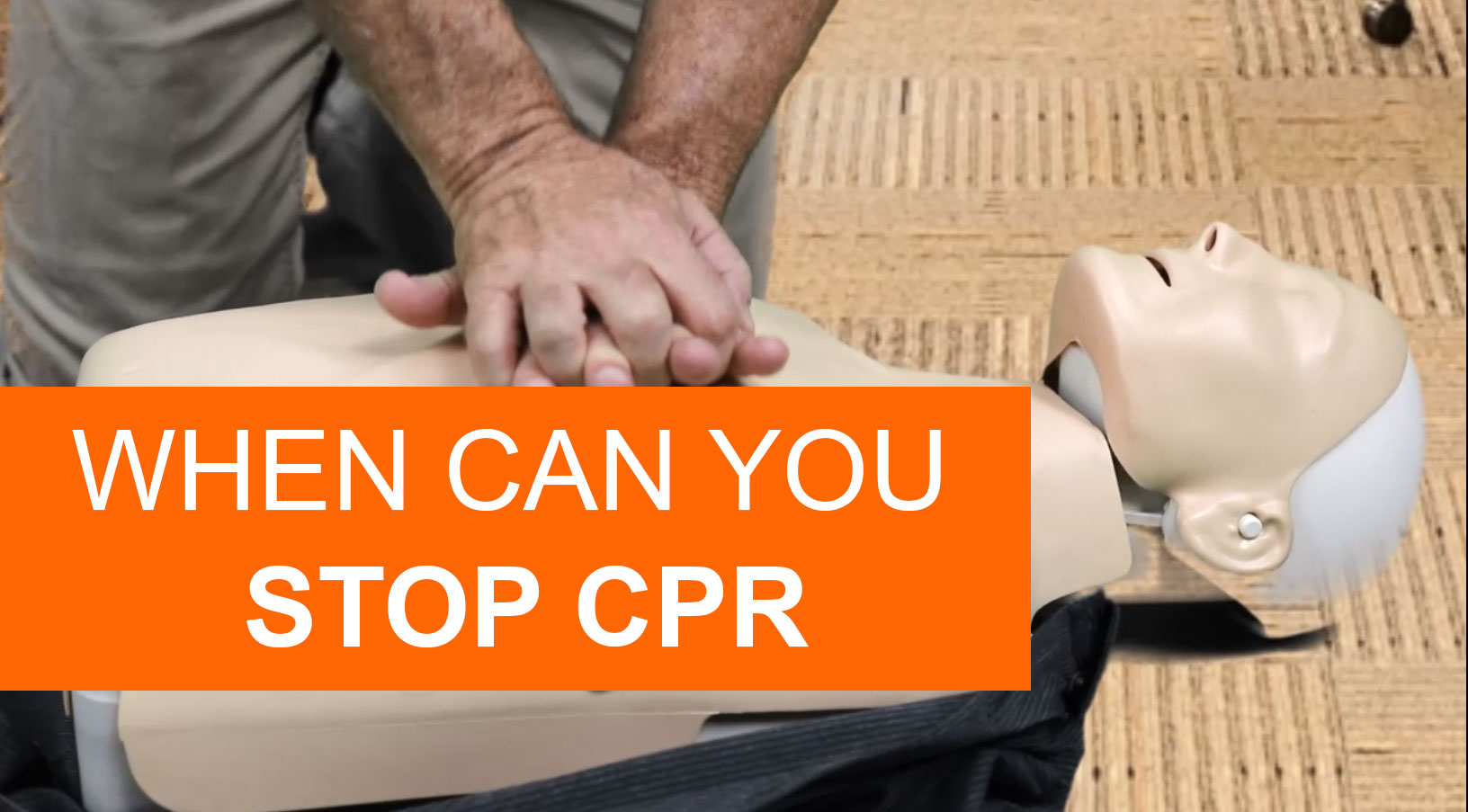When Can You Stop CPR

Most CPR instructors will tell you that “once you begin CPR, you cannot stop” even an online CPR course will tell you the same thing. But of course, there are times you can and should stop CPR. Let’s go over each one.

When To Stop CPR
- The victim begins breathing. That is kind of a big deal. Because if your victim is breathing, they also have a pulse. So, you should stop CPR since they no longer need compressions because the heart is beating or breathing since they are now breathing on their own. Pushing on the heart while it is beating, especially following cardiac arrest could be detrimental to the heart rhythm.
- Help arrives. This could be someone else with equal or higher training than yourself to share taking turns to perform CPR. This doesn’t mean one of you will do compressions while the other person does the breathing. It means when you need a break after about 2 minutes the other rescuer takes over completely with ventilations and compressions. Then you will swap out again and let the other person rest. It has been proven that at about the 2-minute mark rescuers begin to tire and as a result, the compressions become weaker and slower reducing the effectiveness of CPR.
The other type of help that will arrive is 9-1-1 Emergency Medical Services, fire department paramedics. They of course will take over completely and elevate the care to Advanced Life Support. - Exhaustion. You the rescuer become totally exhausted from your CPR efforts. You are not only tired, but so exhausted that you just cannot go on. No one can expect you to do more than you are capable of. Just do the best you can.
- AED. You can stop CPR temporarily while you connect the victim to the Automatic External Defibrillator. This should be done as quickly as possible. While getting the AED ready another rescuer should continue with CPR until you are ready to place the pads on the bare chest. Compressions should continue even during prepping the patient for removing any chest hair or moisture on the chest. And once you have shocked the victim, CPR should resume as soon as possible unless the victim begins breathing.
- The scene becomes dangerous. Not all CPR rescues are free from hazards. There could be lightning strikes, uncontrolled traffic, civil unrest, etc. If it is safe to move the victim do so if possible. But don’t put yourself in a dangerous situation.
- 30 minutes has gone by. If no EMS/Paramedics have arrived on the scene to perform Advanced Life Support within 30 minutes, you can stop. The victim has been down to long with only basic life support being performed. Exceptions to this rule is a cold-water drowning, ice, or snow rescue where the victim’s body core temperature has significantly dropped. In this case, you will continue CPR until rescuers arrive.
These are a realistic list of the reasons you can stop or discontinue CPR. Encourage your family members to become CPR and First Aid trained. Our online CPR and First Aid certification course is a great opportunity for them to learn lifesaving skills quickly and for free.



Comments are closed.